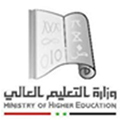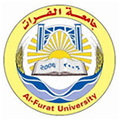آخر الأخبار
تحضير ودراسة الطابع النووي في عينات غير حية من نوعين من الأسماك ( الكارب والجري)
2010, Volume 1, issue 4,pp 238-251| Cite as
Chromosomes Preparation & Karyotyping in unlived specimen of two fish species (Cyprinus carpio & Silurus triostegus)
| authors |
Mohammed ROUKBI |
| Abstract |
Karyological information of fish are important from taxonomical view point. To overcoming the difficulties due to the transport for long distances or to keep fish alive in a laboratory for in vivo and in vitro Colchicine treatment, the use of in field removed fresh gill for the preparation of Fish Chromosomes were proposed. To perform this study gill specimen dissected from Cyprinus carpio & Silurus triostegus sold in the market after the fish were being captured in Assad lake were submitted Colchcine treatment in Aleppo agricultural research center /General commission for Scientific Agricultural research which has been included an incubating in incubation medium containing colcemid (10%) for 2-2.5 hours. Another treatment with 0.3% KCl solution for 30 min were applied. Afterwards, tissues were fixed in fresh Carnoy solution. Cell suspension was dropped onto slides, dried and then stained in 3% Giemsa solution. Several metaphase plates were selected and photographed. The results showed the possibility of chromosomes preparation in vitro in fresh fish gill specimen after a while from capture. The karyogram of Silurus triostegus were constructed, by grouping the chromosomes into three series, i. e., metaphase, submetacentric and subtelocentric-acrocentric elements, and aligned serially from the larger to smaller, respectively. Also, the number of arms were established. Key words: Chromosomes preparation, Fish, Colchcine Treatment, in vitro, Karyotyping |
| الكاتب |
محمد ركبي |
| الملخص |
تعتبر دراسة التنميط النووي أو الصيغة الصبغية للأسماك من الأمور المهمة من الناحية التصنيفية والتعرف على الأنواع السمكية، ولا يخلى تحضير الصبغيات باستخدام طريقة المعاملة المباشرة بالكولشسين للسمك الحي (in vivo) أو لأنسجته بعد استخلاصها (in vitro) من صعوبات متمثلة بنقل الأسماك حية بعيدا عن أماكن تواجدها لإجراء المعاملة السابق ذكرها بالكولشيسين، لذا كان لا بد من اختبار صلاحية عينات الأنسجة المستخلصة من الأسماك بعد برهة من صيدها لاستخدامها في تحضير الصبغيات. لتنفيذ البحث نزعت عينات من أنسجة عائدة لأنواع مختلفة من الأسماك مباعة في السوق تم صيدها من بحيرة الأسد. وقد تضمن تحضير صبغيات الأسماك والذي أجري في مركز البحوث العلمية الزراعية بحلب نقع الأنسجة in vitro في وسط حضن يحتوي على الكولشيسين بتركيز 10% لمدة 5. 2 ساعة، ثم بمحلول KCI منخفض التوتر لمدة 30 دقيقة قبل أن يجري تثبيتها بمحلول کارنوي. وقد أخذت 2-4 نقاط من المعلق وأسقطت على شرائح زجاجية ثم جففت ولونت في محلول جيمسا 4%. وقد تم فحص الشرائح بالتكبير 170X ثم 1020X للبحث عن لوحات استوائية لتصويرها بالتكبير 1700X أظهرت النتائج إمكانية تحضير صبغيات الأسماك بعد برهة من صيدها من عينات الغلاصم المنزوعة. كما أمكن تنصيب وترتيب صبغيات سمك الجري من الأطول للأقصر وذلك ضمن مجموعات حسب توضع النقطة المركزية وكذلك حساب عدد أذرع الصبغيات (NF). الكلمات المفتاحية: تحضير الصبغيات، الأسماك، المعاملة بالكولشيسين، في الأنبوب ، دراسة النمط الصبغي |














